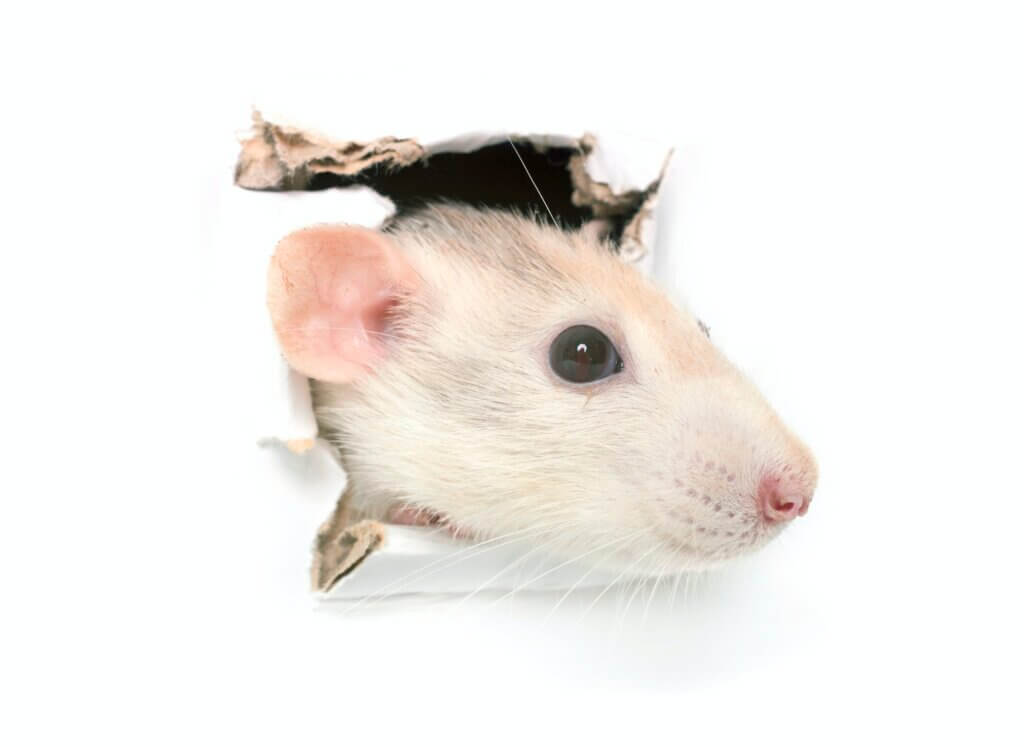Mice are a common problem for homeowners. These rodents can cause damage to your home, and they can also be carriers of diseases. You need to take action when you see evidence of mice in your home so that you can prevent further damage and health issues from occurring. First, start by blocking mouse entry points outside of your home if possible.
Start By Blocking Mouse Entry Points Outside Of Your Home
The first thing you should do is seal off any holes on the outside of your home. You may be surprised by how many holes there are, and they could provide an easy entry point for mice. Here are some places to look:
- Wall and floor cavities
- Foundation
- Garage door area (mice can crawl through tiny cracks in garage doors)
- Attic vents (especially if there’s a chimney or wood stove inside)
- Basement windows

Think Like A Mouse As You Search For Hidden Entry Points
As you search for hidden entry points, it’s important to consider how mice are able to get inside your home. Just like humans, mice need a way into your house. They’re small and agile, so they can squeeze through tiny cracks in walls and floors. They can swim through pipes and cables that connect your house to the outside world.
If You Know Where Mice Get Into Your Home, Half The Battle Is Already Won
It is important to determine the entry points into your home because it will help you determine where you need to put traps, bait, and deterrents.
- Look for holes around pipes, vents, and cables leading into your home. These rodents like to chew on these areas since they make them easy targets for access into your house.
- Search for holes around pipes, vents, and cables leading into your home. These rodents like to chew on these areas since they make them easy targets for access into your house.
- Examine the foundation of the building for signs of crumbling mortar or cracks in the cement. This could be evidence of mice or rats trying to enter the building from below.
You Must Block All Mouse Entry Points With Steel Wool And Caulk
Once you’ve identified all of the potential mouse entry points, it’s time to start blocking them. Steel wool is your best bet for sealing up holes in walls and floors, but it can be difficult to find exactly where mice are getting in.
You must block all mouse entry points with steel wool and caulk. You should place long pieces of steel wool into every hole that you can see or feel on the inside of your home—including behind electrical outlets and switches, in cracks between floorboards, around windowsills, etc.—and then seal them up with caulk (you may need multiple tubes).
Mice Can Squeeze Through Holes As Small As A Dime Because They Are Relatively Flat When They Sneak Through Them
While mice are not known to burrow through solid walls, they can squeeze through holes as small as a dime. This is because when swimming, their bodies flatten out and then expand into a larger shape once they exit the hole. It’s not just the holes that need to be sealed; the surrounding area needs to be blocked as well.

A mouse may enter your home in any number of ways: through an open window or door, behind or under furniture and appliances, down chimneys, and around attic vents. Once there, it will look for places where it feels safe—usually in your walls or attic—and make itself at home by chewing its way in through drywall or insulation (which is why you should never store food inside).
If You See Mice Or Hear Scratching Inside The Walls, It’s Not Something To Ignore
If you see mice or hear scratching inside the walls, it’s not something to ignore. Mice can cause a lot of damage and are known for their loud gnawing sounds. They also carry diseases that can make people sick—including salmonella and hantavirus. In addition, mice have been known to start fires by chewing through the electrical wiring in attics or basements.
If you suspect that there are mice in your home, contact an exterminator immediately!
When You See Evidence Of Mice In Your Home, It’s Time To Take Action
When you see evidence of mice in your home, it’s time to take action. Here are some signs that mice could be on the loose:
- Droppings – These small black pellets can be found on anything from the floor to countertops, and may be accompanied by a sweet smell similar to honey or almonds. If you find droppings around your home, it’s likely that there is more than one mouse present.
- Chewed Wires – Mice love to eat electrical wiring because it provides them with an energy source they can’t get from other foods or materials in their environment (though they still like variety). If you see chewed wires leading into your walls or ceiling, this is another sign there may be mice nearby—but don’t ignore it! Even if no gnawed small holes are visible at first glance, these jagged edges can cause short circuits and lead to fires when exposed over time; repairing these issues right away will save both money and hassle down the road.
- Gnawed Holes – This is perhaps the most obvious way to tell if there are rodents living nearby: look closely at any holes found around doors and windows; if they’re too cleanly cut for pet claws or household tools (which often leave irregular edges), chances are good that a rodent caused them by chewing through wood with its sharp teeth.
- Evidence Outside Of The Home – If you find evidence inside your home but none outside yet—or vice versa—it might not mean anything at all (especially since most people only check their homes’ exteriors once per month).
Bonus: Mouse Entry Point Detection Wrap Up
Incorporating the latest in pest detection technology, homeowners can now utilize thermal imaging cameras and ultrasonic detectors to uncover hidden mouse entry points. These advanced tools can reveal temperature discrepancies within structures and detect movements through ultrasonic waves, allowing for a non-invasive and highly effective approach to identifying potential rodent access areas. This modern method enhances traditional inspection techniques, offering a comprehensive solution to managing and preventing rodent infestations.
When trying to keep mice and rats out of your home, it’s essential to identify all potential mouse entry points. These rodents are adept at finding even the smallest gaps to squeeze through. Common entry points include cracks in the foundation, gaps around windows and doors, and holes in walls where gas lines or other utilities enter. Inspect your home thoroughly, paying close attention to these areas.
Rodent Entry Points Can Be Tricky
Rodent entry points are not limited to obvious gaps; mice can also enter through food and water sources. Ensure that food is stored in sealed containers and that any water leaks in basement waterproofing are promptly fixed. These precautions will help minimize signs of rodent activity in your home.
Signs Of Mice Or Rodent Activity
Signs of mice activity include droppings, gnawed wires, and nesting materials. Mouse droppings, often found near food sources or along their regular paths, are a clear indicator of their presence. If you notice any signs of mice, it’s crucial to act quickly to prevent a full-blown infestation.
Pest control professionals recommend using steel wool to block small holes, as mice cannot chew through it. This method, combined with caulking, effectively seals potential entry points. Regularly inspect areas such as your garage door and around pipes to ensure these barriers remain intact.
Mice and rats can cause significant damage to your home, especially if they gain access to your attic or walls. They often chew on electrical wiring, which can be a fire hazard. To protect your home, look for potential entry points and take steps to block them before a problem arises.
Utilizing the latest pest detection technology, such as thermal imaging cameras and ultrasonic detectors, can help homeowners uncover hidden mouse entry points. These tools can detect temperature differences and movement, offering a non-invasive way to find where mice are entering your home. This modern approach complements traditional inspection methods, providing a comprehensive solution to managing rodent infestations.
By addressing these common entry points and being vigilant for signs of mice, you can effectively prevent these pests from entering your home. If you suspect a rodent problem, don’t hesitate to contact pest control professionals for assistance.
Conclusion
Finding mice entry points can be a lot of work, but it’s worth it. Once you know where mice are getting into your home and how they’re doing so, you can start sealing these holes up and keeping them out for good! If you want to make sure that no more rodents will ever get into your house again, follow our tips today on how to find mouse entry points in order to keep them away from your property.
Speak with a live Gunter Pest & Lawn pest control professional today about our Pest Control Services by calling 816-444-2847 or using our contact form and we will help you with your residential or commercial pest control needs.
Be Sure To Check Out Some Of Our Services:
Lawn Care — Rodents — Cockroaches — Termites — Bed Bugs








